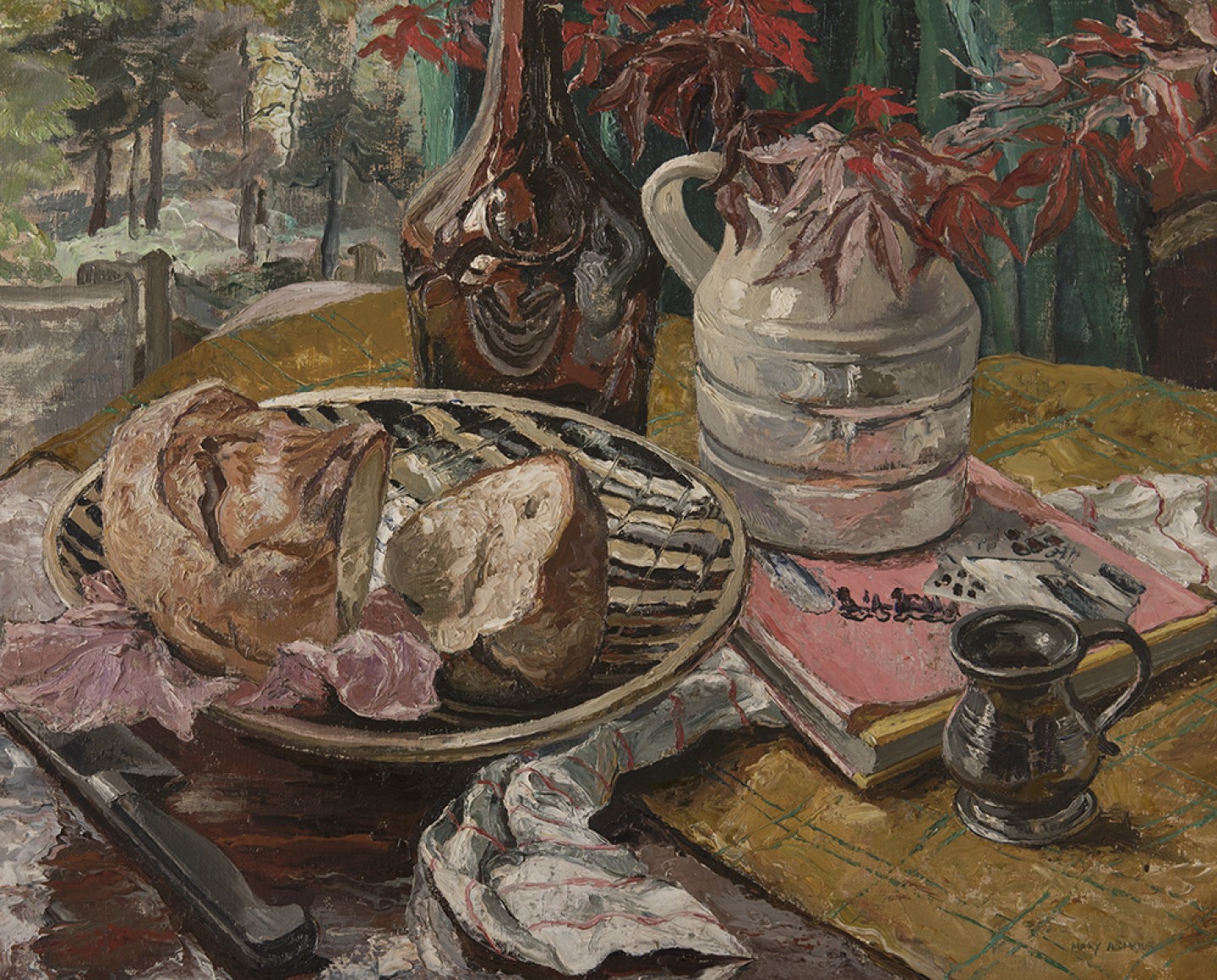DESCRIPTION
Like many women of her generation throughout Britain, Mary Armour had to abandon her career as a teacher when she married in 1927. However, she did not lose touch with the art world, since her husband, William Armour, was also an artist and she herself continued to paint and exhibit. She resumed her career in 1951, the year of this portrait, joining the staff of Glasgow School of Art. There she was to benefit greatly through contact with younger painters and new ideas, but Elizabeth is still cast in the traditional mould of portraiture: the painter has aimed at being faithful to natural appearances and she has been quietly sympathetic towards the grave and elegant sitter, without probing too deeply into her character. Elizabeth was exhibited at the Royal Glasgow Institute of the Fine Arts in 1952.
DETAILS
-
Artist
Mary Armour
-
Date
1951
-
Medium
Oil on board
-
Object number
973
-
Dimensions unframed
81 × 56 cm
-
Dimensions framed
102 × 76 cm
-
Marks
Signed and dated bottom right
-
Subject
-
Copyright
Ⓒ The Artist's Estate. All Rights Reserved 2019/Bridgeman Images
ARTIST PROFILE
Mary Armour, 1902-2000
Born at Blantyre, Lanarkshire, Armour was the eldest of a steel worker's six children. Her parents were happy for her to study art, and in 1920 she won a bursary to Glasgow School of Art. A further, post-diploma, bursary allowed her to stay on at the school. After graduating she trained as a teacher and taught art in schools in Cambuslang and Glasgow until 1927, when she had to resign as a result of marrying fellow artist William Armour RSA RSW, since at that time it was not considered socially acceptable in Scotland for married women to work. The couple set up home in Milngavie, where they started the Milngavie Art Club. They were to have no children - the result of Mary's life-threatening encounter with peritonitis as a young woman - but her family was extended beyond siblings, nephews and nieces by her lasting concern for friends, colleagues and pupils. Glasgow School of Art and the Royal Glasgow Institute became favourite beneficiaries of her later financial success, gifts large and small being made with the minimum of fuss and publicity.
Armour's painting spanned the century in both its chronology and its style. Until 1950 she was a perfect product of a way of teaching that put great emphasis on the traditional virtues of drawing and composition, as well as that particular Glasgow hallmark, tonal values. In 1937 she won the Guthrie award at the Royal Scottish Academy. After she joined the teaching staff of Glasgow School of Art in 1951, the brighter palettes and more fluid handling of her young students caused a general change in her work. Quoted in an article by Clare Henry in the Glasgow Herald in 1998, Armour said: "I learned more from my students than they ever did from me!" In 1953 she and her husband moved to Kilbarchan, where she was to live for the majority of her life.
Armour is best known for her landscapes and still lifes, in particular her highly coloured, richly painted studies of flowers and fruit.





